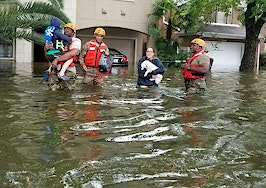New York City Mayor Bill de Blasio recently made waves when he proposed energy efficiency improvements for old city buildings spewing pollutants. Some cities already require similar upgrades when properties are sold, but de Blasio’s proposal is unique: it applies to all buildings, for sale or not.
This new initiative, brought forth in an effort to reduce greenhouse gas emissions, should establish the city as a leader in environmental efforts.
The new proposal underscores that the time is right for energy retrofits, if not to save the planet then at least to save money for property owners and add value upon sale.
Bottom line first, climate change second
When it comes to the benefits of reducing greenhouse gas emissions, the numbers add up. In New York, the 14,500 buildings — out of a total of about 1 million citywide — targeted by de Blasio’s proposal blast out a full 24 percent of the Big Apple’s greenhouse gas emissions.
Even if reducing greenhouse gases is not a priority for property owners, the bottom line benefits of an energy retrofit can be substantial, especially for older buildings.
Such is the case for New York’s 87-year-old Empire State Building, which underwent a holistic energy efficiency upgrade in 2011 and has saved millions annually since. The retrofit involved all 6,514 windows of the 102-story building.
Advice for homeowners
Relatively speaking, homeowners can also realize significant savings from retrofits, along with the added bonus of improvements in comfort level and indoor air quality.
Retrofits can also add resale value. Attic insulation, for example, “more than paid for itself” in a majority of the markets surveyed by Remodeling Magazine last year.
Homeowners do need to do a little homework to get the most bang for their buck. Ron Jones, president of Green Builder Media, recommends starting with the building envelope and focusing on insulation and windows: “Don’t get lost in the candy store of higher-performing devices. Once you improve the envelope, it will be there for as long as you live in the house.”
”You can put bells and whistles in a poorly performing building and what you have is a poorly performing building with bells and whistles,” he cautioned.
Next comes upgrading HVAC equipment and major appliances. Jones advises homeowners to be careful not to overlook a water heater upgrade. Water heaters are the number one item people take for granted, he said. Usually when they give out, people are desperate to replace them, but they are the second or third largest energy user in the house, he explained.
Incentives for energy efficiency retrofits
Despite the clear long-term savings, motivating property owners to invest money up front in energy retrofits is still a challenge.
Fortunately, new emerging financing options are making it easy for commercial builders to go the environmentally-friendly route.
For example, Energy Savings Performance Contracts provide for retrofits with no costs up front. The contractor receives payment based on the value of the energy saved.
New incentives for homeowners are also beginning to emerge, some of which are tied to upgrade mandates such as de Blasio’s proposal, which provides low interest, long-term financing among other incentives.
Energy efficient mortgages are another new instrument that eliminates the initial economic sting from a homeowner’s decision to invest in a retrofit.
As Jones says, the internet is providing property sellers and buyers new tools for researching retrofit costs and comparing home values, and property owners stand to make big bottom line gains by using it.
Tina Casey has been writing about sustainability, alternative energy and energy efficiency since 2009. Her articles appear regularly in CleanTechnica.com, where she is a senior reporter, and TriplePundit.com. Follow her on Twitter.











